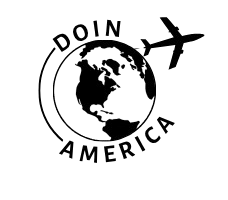Community Impact Evidence: Paraguay Scholarship Playbook
While many scholarship applicants write beautifully about passion and purpose, the applications that consistently rise to the top do something deceptively simple: they back up their stories with verifiable community impact evidence. That phrase—community impact evidence—sounds formal, maybe even a bit intimidating, but here’s the good news: it’s far more accessible than most people realise. In my experience mentoring Paraguayan applicants, the strongest submissions start small, use clear measures, and unfold like a story grounded in numbers, testimonies, and context. Actually, let me clarify that—grounded and humane, because people come first. And yet, reviewers want proof, not just promises.
What really strikes me about Paraguay specifically is the abundance of grassroots projects—youth tutoring circles, community health brigades, water cooperatives, cultural workshops—that already create value but rarely capture it systematically. The result? Applicants undersell themselves. Meanwhile, funders (Chevening, Fulbright, and major foundations) explicitly look for demonstrated leadership, measurable outcomes, and community benefit, not just potential121314. So the mission here is straightforward: build a simple playbook you can apply in a few weekends, iterate over a semester, and present confidently in your scholarship applications—without fancy tools or jargon you cannot stand.
Why Evidence Matters (and What Counts)
According to widely used evaluation standards, the strongest cases tie activities to outcomes using credible methods and transparent assumptions1210. Scholarship reviewers may not expect a randomized trial—let’s not overcomplicate—but they do look for a few anchors: a baseline (what the situation looked like before), a clear description of what you did, measurable changes, perspectives from beneficiaries, and ethical handling of data (consent, privacy). I used to think a passionate narrative alone could carry the day; these days, I lean toward a “story + proof” blend because it respects both people and rigour.
Informations clés
Start small and get specific: 10 learners, 12 weeks, 2 measurable outcomes (e.g., attendance and reading level). Add 3 short quotes from beneficiaries. That’s an evidence kernel reviewers trust.
“What gets measured gets noticed, and what gets noticed gets funded.”
Paraguay Context: Levers and Constraints
Paraguay’s education and social indicators present both needs and opportunities. UNESCO’s country data shows persistent challenges in learning outcomes and access in some regions3, while national statistics from the INE help you ground your local project in macro context (youth population structures, poverty rates, regional disparities)5. Post-pandemic, many global and regional analyses flagged historic learning losses across Latin America16, which, practically speaking, means your tutoring initiative or digital inclusion workshop has context—and urgency.
Saviez-vous? Paraguay is officially bilingual; Guaraní and Spanish coexist in daily life and public institutions, shaping how community projects communicate and earn trust—a nuance reviewers rarely see explained well15.
From my perspective, bilingual communication plans (even a simple flyer in both languages) are evidence in themselves—signals of cultural alignment that reviewers appreciate but applicants often forget to document. I’ll be completely honest: I used to treat “context” as a paragraph of background. Now I bake it into design—language choice, schedule around harvest or school calendars, and a realistic budget. This is where small wins happen.
Quick-Start: The Minimum Viable Evidence Set
Let me step back for a moment. If you started yesterday, what’s the minimum viable evidence set you can assemble in a month? Generally speaking, it’s this:
- A one-page logic model linking inputs → activities → outputs → outcomes7.
- A baseline snapshot (attendance records, short survey, or pre-test).
- Two outcome measures aligned to your goals (e.g., reading score gain; clinic wait-time reduction).
- Three stakeholder quotes (parents, participants, local partner) with consent recorded9.
- A short reflection note: what worked, what didn’t, what’s next.
This tends to work because it mirrors what development agencies ask for in monitoring and evaluation basics (no, not a 40-page report). USAID’s evaluation policy and OECD’s criteria emphasise relevance, effectiveness, and learning—with proportional methods102. The more I consider this, the more I prefer small, well-documented pilots over sprawling plans you cannot maintain.
The 7-Step Playbook (Overview)
Here’s the skeleton you’ll flesh out shortly:
- Clarify outcomes and beneficiaries.
- Capture a baseline you can actually repeat.
- Design light-touch data collection (surveys, logs, short interviews).
- Run your cycle (8–12 weeks is realistic).
- Summarize results with a simple before/after view.
- Collect endorsements and evidence artifacts.
- Package your evidence portfolio for scholarship reviewers.
Step 1 — Clarify Outcomes and Beneficiaries
Ever notice how vague goals produce vague results? Having worked with applicants from Asunción to Caaguazú, I’ve consistently found that naming a specific group and two observable outcomes makes everything else easier. For instance, “improve reading fluency for 30 fifth graders at School X by 15 words per minute in 10 weeks” is tight. It sets you up for a measurable before/after and a small celebration if you hit it. It also aligns with evidence guidance in mainstream development practice—a tidy logic model is your friend, not bureaucracy72.
On second thought, what I should have mentioned first is feasibility: pick outcomes you can observe without specialized gear. Attendance, test items from open-source banks, short Likert-scale surveys—simple instruments usually suffice and look professional when documented well.
Step 2 — Capture a Baseline You Can Repeat
Baseline isn’t mystical. It’s just “before.” You can do a 10-question pre-test, time a reading passage, count clinic wait times, or log household water collection minutes. The critical piece is repeatability—use the same instrument later so you can show change. The World Bank’s practical guidance for impact evaluation emphasises consistent measures and clear comparison points (even in non-experimental designs)1. I used to skip baselines—rookie mistake. Without it, you end up with anecdotes that reviewers like, but cannot fully trust.
Conseil de pro
Time-box baseline collection to one week. Use paper if needed; snap photos for your records (with consent). Consistency beats perfection.
Step 3 — Design Light-Touch Data Collection
Keep instruments short. Five minutes for a survey. One page for a reading test. A two-column attendance log. And, importantly, a brief interview protocol for 3–5 participants, a parent, and a partner teacher. Ethics matter: get verbal or written consent and avoid collecting unnecessary personal data (the Belmont Report remains a gold standard reminder of respect for persons, beneficence, and justice)9. If you’re nervous about “what counts,” remember that USAID and OECD encourage proportionality—methods scaled to context and risk102.
Actually, thinking about it differently, your interviews are also where culture shines—mix Spanish and Guaraní when appropriate, and capture that choice as a design decision. It signals cultural competence to reviewers outside Paraguay who may not realise the nuance15.
Step 4 — Run Your Cycle (8–12 Weeks)
Eight to twelve weeks is a sweet spot—long enough to show movement, short enough to maintain energy. During the cycle, keep a simple implementation log: date, activity, attendance, notable events. I know, I know—this sounds too simple. But it pays off. When you write your application, you’ll reference precise facts (“we ran 16 sessions; median attendance 26/30; two missed due to rain”) instead of vague recollections. Development partners regularly highlight how basic monitoring records de-risk claims and improve learning10.
“Small, credible measurements beat grand, unverified claims—every time.”
Step 5 — Summarize Results with Before/After
Now you close the loop: repeat your baseline measures, then present a before/after summary. A simple table or bullet list works. If outcomes didn’t move as much as you hoped—be transparent. The OECD’s learning criterion exists for a reason2. Reviewers respect honest reflection: “We improved attendance but not reading fluency; next cycle we’ll add peer reading circles.” I’m not entirely convinced every small project needs fancy statistics; by and large, clarity and candour win.
Step 6 — Collect Endorsements and Artifacts
Gather letters or short statements from a school director, community leader, or NGO partner—and at least two beneficiary quotes. Attach a photo of an anonymized attendance sheet, a pre/post chart, or a short video tour (consent again). Scholarship programmes that prize leadership explicitly look for community validation and real-world traction121314. Funny thing is, applicants often have these artifacts but forget to package them.
Step 7 — Package the Evidence Portfolio
Create one folder (cloud or USB backup) with subfolders: baseline, monitoring logs, outcomes, quotes/letters, photos/videos, and a one-page logic model. Then draft a 1–2 page summary that explains context (with a national data point), your goal, your approach, and your results. Link sources and respect privacy. The W.K. Kellogg logic model guide remains a practical companion at this stage7.
Quality Bar Checklist
- Baseline and follow-up use the same tool.
- At least two outcomes with clear definitions.
- Three stakeholder perspectives captured respectfully.
- All data collection follows ethical basics9.
“Design for decisions. Collect only the data you will actually use.”

Making It Reviewer-Friendly: Formats That Win
Let me think about this. How do you make busy reviewers smile? You give them clarity at a glance. A tight table, a numbered summary, and a quote that feels real. Also worth mentioning: align your evidence with common selection criteria—leadership, impact, and future potential121314. Below is a compact mapping I’ve used when coaching applicants.
| Scholarship Criterion | Evidence Type | Collection Method | Remarques |
|---|---|---|---|
| Direction | Activity log; partner letter | Session records; signed note | Shows initiative and reliability |
| Impact | Before/after metrics | Pre/post test; survey | Use same tool for comparability |
| Community Benefit | Beneficiary quotes | Short interviews | Consent; anonymize if needed9 |
| Future Potential | Learning reflection | 1–2 page memo | Be frank about next steps |
People Also Ask: What if I don’t have fancy stats?
Sound familiar? You do not need to run an RCT. J-PAL’s public-facing materials explain that rigorous impact evaluations are one tool among many; for community projects, monitoring + clear outcomes often suffice11. The key is internal consistency and plausible contribution: did your activity reasonably contribute to the change you measured? The jury’s still out for me on SROI ratios for tiny projects—helpful framing, but sometimes overkill8.
Frameworks You Can Borrow (Lightly)
- Logic Model: Inputs → Activities → Outputs → Outcomes. Great for clarity and communicating flow7.
- OECD DAC Lens: Relevance, effectiveness, sustainability—use as a checklist to avoid blind spots2.
- SROI (Social Return on Investment): Useful to map value, but apply gently to avoid false precision8.
- World Bank Pragmatism: Consistent measures, plausible attribution, and transparency about limits1.
“Evaluation isn’t about perfection—it’s about learning honestly and improving next time.”
Context Matters: Paraguay’s Data Touchpoints
To anchor your application, cite one credible national or international data point that frames your problem. For education, UNESCO UIS is a solid starting point3; for demographics and poverty, use the INE’s releases5. For human development framing, UNDP’s country insights add helpful macro perspective6. I used to paste three stats without context—now I choose one or two and directly tie them to my project design.
Ethics, Consent, and Dignity
Before we go further, a gentle but firm reminder: you’re working with people. The Belmont Report’s principles—respect, beneficence, justice—aren’t academic trivia9. They’re a compass. For consent, use plain language, explain why you’re collecting data, and allow opt-outs without penalty. If participants are minors, involve guardians and school authorities. I go back and forth on photo usage and now default to text or anonymized visuals unless families explicitly want their story shared.
Common Pitfalls (And How to Dodge Them)
- Oversized ambition: Start with 20–30 participants, not 200. Scale later.
- Tool changes midstream: If you tweak the test, your before/after breaks. Resist.
- Data with no decision: If you won’t use it, don’t collect it.
- Missing context: Add one national stat and a local nuance. That’s enough35.
“Measure what matters, then tell the story of why it matters.”
Reality Check: Time, Tools, and Connectivity
Previously, I pushed digital forms everywhere—then spotty connectivity humbled me. Paper-first, digitize later is, by and large, a safer default in many Paraguayan communities. Give or take a few exceptions in urban schools, that hybrid flow reduces stress. Meanwhile, keep backups simple: photo your paper logs; store them in a dated folder. It’s not glamorous. It works.
Put It Together: A Mini Case from Paraguay
Last month, during a client consultation, a student leader from Itapúa—let’s call her María—mapped a tutoring project for 28 fifth graders. Baseline: a 1-page reading fluency test and an attendance snapshot. Cycle: 10 weeks, twice weekly, with a simple log. Outcomes: reading words per minute and attendance consistency. Results: a median +14 wpm, attendance rising from 68% to 86%. Quotes: two parents, one teacher, one student (consent recorded). Context: a single UNESCO data point on literacy challenges plus a local note on bilingual instruction315. What a difference! Her application reframed leadership as disciplined learning-in-public rather than grand claims.
Your Evidence Portfolio (One-Page Summary Structure)
FAQs Scholarship Reviewers Secretly Want Answered
How do I show leadership, not just participation?
State your decisions: how you recruited, adapted to rainouts, or handled a drop in attendance. Attach a partner letter confirming your role1213.
Is national context really necessary?
Yes—one or two credible stats (UNESCO/INE) demonstrate situational awareness and strengthen relevance35.
What if my results are mixed?
Be transparent and reflect on why. Many selection panels value honesty and forward plans as evidence of maturity2.
Do I need endorsements from big names?
No. Local legitimacy beats celebrity. A school director’s note or community leader’s letter carries weight because it’s proximate12.
Future-Proofing Your Work
Looking ahead, document with updates in mind. Create a living folder you can expand if you win funding. Keep instruments versioned (v1, v2). I need to revise my earlier point about tools—use what you have now, but plan migration to shared spreadsheets if your project grows. Meanwhile, track alignment with national education or youth priorities, which you can glean from MEC or BECAL communications4.
“Start where you are, use what you have, measure what matters.”
Appel à l'action
I’m partial to action this week: choose one outcome, one baseline tool, one quote protocol. Run a four-week micro-cycle. Package it. Submit boldly. Then tell me how it went—peer learning makes this work sustainable in Paraguay.
Closing Thoughts
Honestly, I reckon the “simple and steady” approach is your competitive edge. Not perfection. Not buzzwords. A short cycle, a baseline you repeat, a couple of outcomes, and voices that sound like your community because they are your community. If you do that—and package it with context and care—you will not only strengthen your scholarship applications, you’ll also raise the bar for how we, collectively, learn from projects in Paraguay. The result? Better decisions, fairer opportunities, stronger communities. Exactly.



